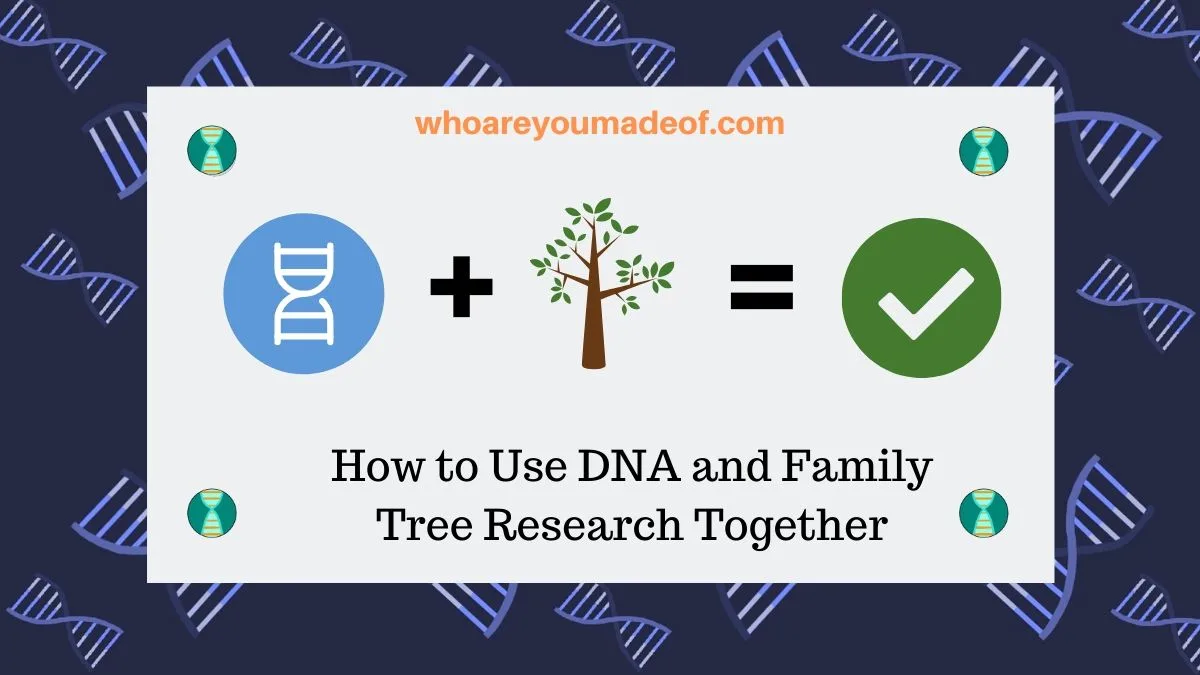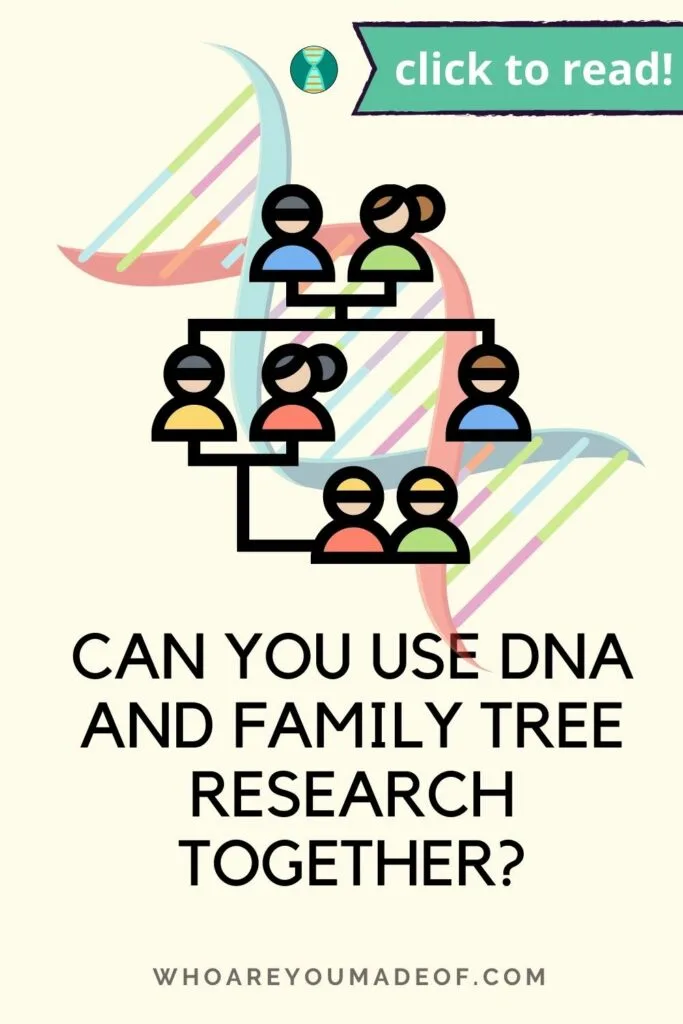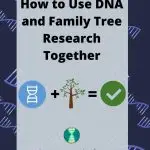If you have an interest in your family history, you might wonder if it is possible to use DNA and family tree research together. In this post, learn how having DNA as a tool in your genealogy toolkit can help you take your research to the next level.
Whether you have already done a DNA test and want to know how to use your results for genealogy, or if you are considering testing, you will learn something in this article.

Before I took my first DNA test, I had no idea that my results could be used to help me learn about my ancestors. In fact, I didn't realize that DNA results included much more than the ever-popular ethnicity estimate.
My husband and I took our first DNA tests primarily to find out why he had red hair in his beard and whether I had Native American heritage, as some family stories suggested.
It came as a complete surprise to us to learn that the most valuable element of DNA testing for genealogy is the DNA match list, which is a list of genetic relatives. Yes, the ethnicity estimate can provide insights into our heritage, but the DNA match list is the true gem of DNA testing.
Do DNA tests give you a family tree?
I occasionally receive questions from people interested in DNA testing who wonder if their DNA results will provide them with a family tree.
DNA tests do not provide you with a family tree. Even though it would be amazing if they could, there is no technology capable of such a feat at the moment.
So, if your DNA results don't give you a family tree, how in the world are they helpful to genealogists?
How DNA results can help with family tree research
The DNA match list is a list of genetic relatives who are related to you in some way, organized in the order of most closely related to more distant. Your closest DNA matches will share recent common ancestors with you, and your more distant matches will share more distant ancestors.
You can use your DNA matches to build a wide family tree
Your DNA match list can help you build a more complete, "wide" family tree. People say that adding your ancestors and as many of their descendants as possible, including those who are descended from the siblings of your ancestors, building your tree "wide".
By learning about each individual DNA match, you can gradually move through your family tree, verifying relationships and adding more people to your tree as you move down your list.
For example, if you find a second or third cousin on your DNA match list, you can add them and their descendants (and their siblings and descendants), their parent (and their siblings and descendants), and their grandparent (and their sibling and descendants), and so on, and so on.
You can verify your family tree using your DNA matches
Your DNA results will include the exact number of shared centimorgans (or percentage of DNA shared) with your DNA match. This type of information can help you determine whether your known genealogical relationship is correct.
Depending on which DNA site you decide to test with, you might have access to a family tree belonging to your DNA match, a list of surnames that they report to be in their family tree, or detailed profile information that can give you clues about how you might be related.
DNA data can help you learn about your ancestors with precision detail
Some DNA testing sites offer advanced tools like chromosome browsers. For those who are detail oriented and love learning, information learned by comparing your DNA to your match in a chromosome browser can help you perform advanced DNA studies of your genome.
One example of this is chromosome mapping where you can use chromosome browser information to "map" your DNA to assign specific segments to the exact ancestor who passed the segment to you.
Which DNA test is best for genealogy?
If you are interested in testing your DNA for genealogy, I highly recommend taking the Ancestry DNA test. This is because Ancestry DNA has the largest non-governmental DNA database with an incredible size of more than 20 million DNA customers.
Just for some perspective, an estimated 20% of people living the United States have taken a genealogical DNA test. Ancestry DNA, with more than 20 million DNA testers, has the largest database of people who could potentially show up as DNA matches for us.
Even though you can use DNA from sites like 23andMe for genealogy, it's best to take your first DNA test with Ancestry DNA if you are very interested in using your results for learning as much as you can about your pedigree. You can always take additional DNA tests if you see the benefit in the future.
There is a benefit in having your DNA in as many testing databases as possible. The more genetic relatives (DNA matches) you can find, the more you can learn about your ancestry.
Fortunately, once you test your DNA with any of the major companies, you can easily download your data and upload them to a few other databases, often for free, in order to find more DNA matches and get access to some pretty neat tools.
If you can afford to take two DNA tests, then I would strongly encourage you to read the following post that explains my ultimate DNA testing strategy that allows to you learn as much as possible from taking the smallest number of DNA tests:
Conclusion
I hope that this post has helped you understand exactly how you can use your DNA to learn more about your unique genealogy, and which DNA test is best for this type of research. My own DNA results have brought wonderful additions to my family and my genealogy research, and I sincerely desire that it does the same for you.
If you have any questions about something you read in this post, I would love to hear from you in the discussion below.
I appreciate you stopping by today!



